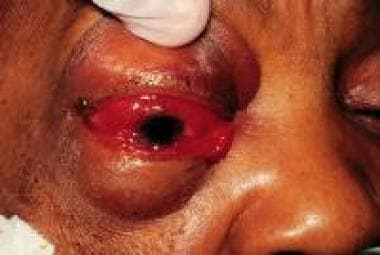Overview
Background
Cavernous sinus syndrome describes symptoms comprising ophthalmoplegia, chemosis, proptosis, Horner syndrome, and/or trigeminal sensory loss evoked by vascular, inflammatory, traumatic, congenital, or neoplastic processes affecting the cavernous sinus near the midline of the frontotemporal part at the base of the skull. There are numerous diseases evoking cavernous sinus syndrome. The most often reported are: intra- and extracavernous or metastatic neoplasms, intra-cavernous carotid artery aneurysms, carotid-cavernous fistulas (see image below), infections, thrombosis, and Tolosa-Hunt syndrome.
Carotid-cavernous fistula.

